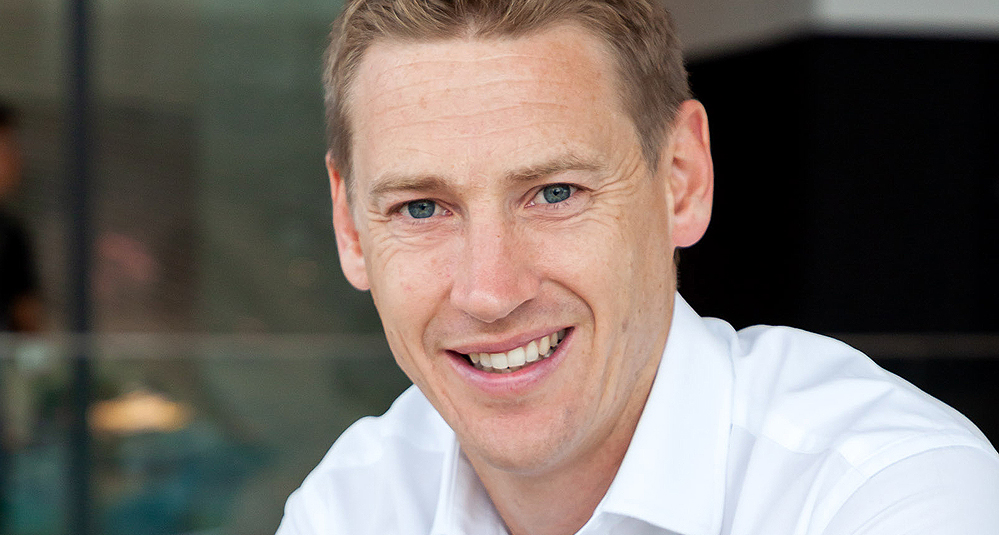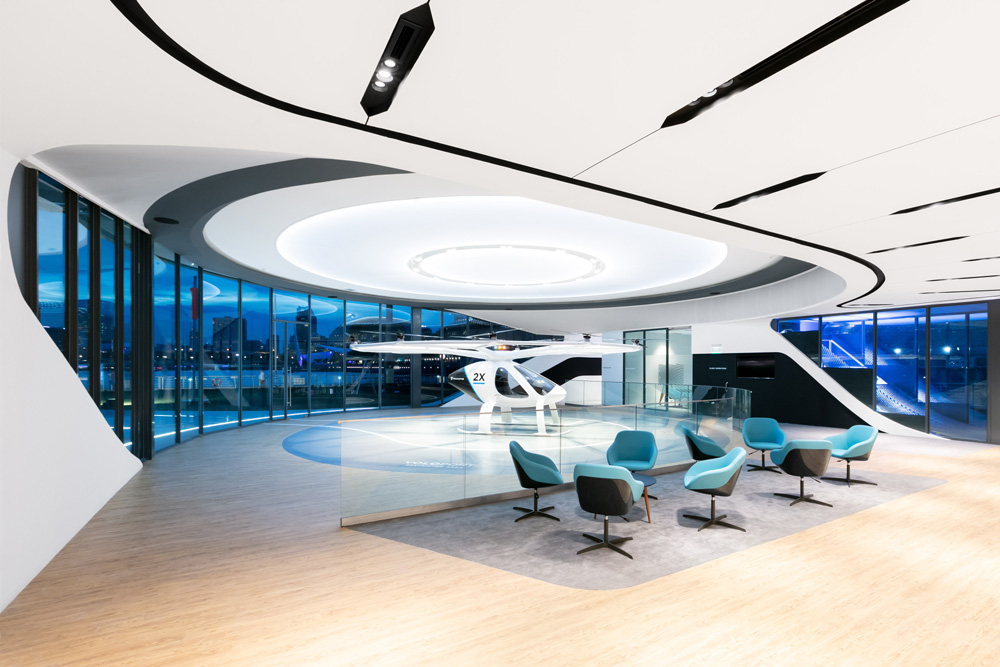
Skyports Duncan Walker 스카이포츠 던컨 워커 CEO
여름. 미군 헬기의 한강공원 불시착을 전후로 우리 정부는 2025년 에어택시 상용화를 위한 한국형 도심항공교통 로드맵을 내놨고, 현대자동차의 UAM 사업부는 영국의 인프라 전문업체와 손을 잡았다. 볼로콥터와 관계되는 다임러가 최초 모빌리티 전담법인을 한국에 설립한 것도 묘한 기대감을 갖게 한다. 비행체에 비해 덜 주목받아왔던 착륙장에 대한 궁금증이 커졌다. 2023년을 목표로, 볼로콥터를 비롯해 몇몇 에어택시 OEM과 작업 중인 영국 스카이포츠의 던컨 워커 CEO와 간단히 이야기를 나눴다.
글|한 상 민 기자_han@autoelectronics.co.kr
Q. 한국 정부, 현대자동차가 UAM 개발에 적극적입니다. 현대의 팀은 최근 영국의 SMALL(Six Miles Across London Limited)의 관련 팀과 인프라에 대한 파트너십을 맺기도 했습니다. 또, 볼로콥터와 관계되는 다임러가 최초 모빌리티 전담법인을 한국에 설립해 묘한 기대감도 있습니다. UAM과 관련해 한국시장을 어떻게 보고 있습니까?
A. 우리는 한국이 아시아에서 처음으로 UAM 운영을 시작할 몇 안 되는 국가 중 하나로 보고 있습니다. UAM의 잠재시장을 평가할 때 우리는 일반적으로 정부의 강력한 조정과 의지뿐 아니라 에어 모빌리티 서비스에 대한 확실한 수요를 봅니다. 서울은 지난 10년 동안 급격히 증가한 도로교통량으로 통근자들이 매일 1~2시간씩 교통체증에 시달리는 등 고통을 겪고 있음을 잘 알고 있으며, 이동시간을 줄이고 생산성을 높이기 위한 에어 모빌리티 서비스 도입 필요성이 매우 높다고 보고 있습니다.
한국의 국토부가 2025년까지 UAM 론칭을 위해 매우 구체적인 로드맵을 제시하고 민관합동 노력을 조율하고 있는 것은 매우 고무적입니다. 또한 현대자동차 등 한국기업이 에어 모빌리티 혁명을 주도할 수 있는 좋은 위치에 있다고 봅니다. 그들은 핵심 사업부로부터의 기술적 전문지식과 이런 프로그램들에 투자할 재정적 능력을 갖고 있는데다가, 리더들과의 격차를 메우고 한국에 UAM 사업 론칭을 위한 궤도를 가속화하기 위해 전 세계 플레이어들과 협력할 수 있다는 열린 자세도 갖고 있다고 봅니다.
Q. 코로나19가 자동차 산업을 바꾸고 있습니다. UAM 산업에는 어떤 영향을 미치고 있나요?
A. 팬데믹은 드론 배송에서부터 조종사가 없는 소그룹 여행과 같은 미래 이동성 재구상에 있어 UAM을 더욱 중요하게 만들었습니다. 예를 들어, 스카이포츠의 드론 배송팀은 NHS(National Health Service)와 직접 협력해 스코틀랜드의 오번(Oban)과 멀 아일랜드(Isle of Mull) 간 의료품 드론 배송을 하고 있습니다.
게다가 UAM의 타임라인은 인증이나 개발 작업, 심지어 잠재적 투자자들의 투자 욕구를 막지 못할 만큼 멀리 있지 않습니다. 이미 일상적인 운영 측면에서 필요한 조치들, 주의사항이 반영되고 있습니다. 여가를 위한 여행이 제한돼 있긴 하지만, 지금 에어 모빌리티의 미래를 형성하고자 하는 마음은 그 어느 때보다 간절한 상황입니다.

9월 볼로콥터는 에어택시 탑승권 예약을 시작하며 2~3년 내에 비행이 이뤄질 것이라고 밝혔다.
Q. 스카이포츠의 시작과 당신의 백그라운드에 대해 간단히 소개해주세요. 또 단순히 버티포트 인프라만 하는 회사가 아닌 것 같은데, 회사에 대해 좀 설명해주세요.
A. 공동 창립자와 함께 3년 전 스카이포츠를 설립했습니다. 저의 경력은 부동산 업계에 있습니다. 우리는 에어택시의 설계와 제작, 관련된 흥미로운 전개를 지켜보면서 이것이 도심에서의 안전하고 효율적인 랜딩 관련 진행과는 많은 차이가 있다는 것을 확인했습니다. 그래서 여러 업계의 플레이어들과 이야기를 나눈 다음 회사를 설립하게 됐습니다.
스카이포츠는 떠오르는 첨단 에어 모빌리티(Advanced Air Mobility) 산업을 위한 지상 인프라를 제공하는 선도적인 업체입니다. 우리는 전 세계의 여객 및 주요 배송 eVTOL OEM과 협력해 도시 및 교외 환경에서 안전하고 효율적인 비행 운영을 가능하게 하는 버티포트(vertiport)를 설계, 구축, 관리, 소유, 운영하는 회사입니다.
우리의 핵심 역량에는 설계에서 운영에 이르는 엔드 투 엔드 버티포트 솔루션을 제공하는 능력, 전 세계 eVTOL OEM과의 깊은 관계, UAM 버티포트 운영의 미래를 결정하는 규제기관을 돕는 전문성이 포함됩니다. 게다가 우리는 고객을 위해 의료 및 e커머스 패키지를 운송하는 드론 배송 비즈니스도 하고 있습니다.
Q. 이 산업의 리더 중 한 회사로서, 볼로콥터 프로젝트를 포함해 그동안의 주요 마일스톤이 궁금합니다.
A. 2019년 10월 스카이포츠는 볼로콥터(Volocopter)와 손잡고 싱가포르에서 전 세계 최초의 개념증명 버티포트를 구축했고, 이후 전 세계 여러 시장에서 버티포트 네트워크 개발에 힘써왔습니다.
싱가포르에서의 쇼케이스는 우리에게 매우 중요했습니다. 왜냐하면 그것은 우리가 버티포트 기술 운영을 테스트하고 규제기관과 관계를 맺어 대중의 인식을 높일 수 있게 해주었기 때문입니다. 볼로콥터와의 파트너십은 매우 성공적이었고 양사에게 희망적인 혜택을 주고 있습니다. 싱가포르에서 있었던 작년 10월의 성공적인 시범비행 이후 우리는 볼로콥터와 싱가포르 등 여러 곳에서 지속적으로 긴밀히 협력하고 있습니다. 플라잉카의 운행, 승객 경험 및 잠재적 사용 사례에 관한 그들의 요구사항을 이해하기 위해 전 세계의 많은 주요 eVTOL OEM들과 협력하고 있습니다.
현재 우리는 버티포트인 ‘스카이포트 원(Skyport.1)’의 반복적인 구축과 테스트를 진행 중에 있으며, 전 세계 도시에서의 상업적 출시에 맞춰 2023년까지 이 과정을 완료할 예정입니다.


2019년 10월 스카이포츠는 볼로콥터(Volocopter)와 손잡고 싱가포르에서 전 세계 최초의 개념증명 버티포트를 구축했고, 이후 그들의 버티포트인 ‘스카이포트 원(Skyport.1)’의 반복적인 구축과 테스트를 진행 중에 있다. 전 세계 도시에서의 상업적 출시에 맞춰 2023년까지 이 작업을 완료할 예정이다.
Q. 자율주행의 미래를 겨냥해 주차장이 중요해졌듯이, 스카이포츠도 도심 속 버티포트 네트워크 선점이 중요하다고 보는 것 같습니다. 당장 이 일이 선행되어야 한다고 생각합니까?
A. 다른 부동산 개발과 마찬가지로 인프라 리드타임은 부지 취득에서 설계, 시공 및 운영에 이르기까지 일반적으로 3~4년 정도 소요됩니다. 따라서 2023년이란 출시일 목표를 맞추기 위해서는 지금 바로 버티포트 인프라 기반을 구축하는 것이 중요하다고 봅니다.
Q. 스카이포트의 투자유치와 진행 프로젝트를 감안하면 머지않아 UAM 산업 규모가 어느 정도 일지 예상될 수 있습니다. 또 이와 관련 업계의 미래에 대해 좀 더 들려주세요.
A. 우리는 가장 최근에 도이치 반 디지털 벤처스(Deutsche Bahn Digital Ventures, DBDV)와 그루프 ADP(Groupe ADP), 레비타이트 캐피탈(Levitate Capital), 아일랜드 항공(Irelandia Aviation)의 투자로 총 600만 파운드(약 100억 원)의 시리즈 A 펀딩을 마쳤습니다.
그동안 eVTOL에는 상당한 투자와 시간, 노력이 들어갔지만 UAM 인프라의 경우엔 현재 저투자 상태라고 봅니다. UAM이 이륙하려면 차량 인증, 인프라 지원, 대중적인 수용 등 동일한 시간과 자본이 투입돼야 할 것입니다.
일단 규모에 따라 버티포트를 구축하기 시작하면 더 많은 자본이 필요할 것입니다. 우리의 현재 투자자들은 매우 큰 대차대조표를 갖고 있으며 우리는 필연적으로 규모를 확대하기 위해 국내 및 국제적으로 다른 파트너십을 형성할 것입니다. 기회가 큰 만큼 많은 자본이 필요할 것입니다.
Q. 드론 배송과 에어택시에서 가장 중요한 것 중 하나가 관련 규정과 기준입니다. 스카이포츠는 리더로서 어떤 역할을 하고 있습니까?
A. 우리는 여러 규제 및 표준기관에 속해 있으며 버티포트 규제와 표준을 개발, 이에 영향을 미치는데 매우 적극적으로 임하고 있습니다. 예를 들어, 우리는 버티포트 표준을 위해 FAA의 인더스트리 RFI에 기여했으며 EASA의 버티포트 태스크 포스의 일원, EUROCAE eVTOL 랜딩 사이트 워킹그룹의 위원장입니다. 또한 GAMA, ASTM 및 ISO의 멤버입니다.
Q. 버티포드에 대한 경험이 매우 궁금합니다. 일반적으로 어떤 질문을 받습니까? 버티포드 관련 특별한 기술, 규제, 조정은 무엇입니까? 헬리포트와 많이 다른가요?
A. 기존의 헬기포드와 비교했을 때 버티포트의 설계, 구축 및 운용에는 몇 가지 주요 차이점이 있습니다. 첫째, 버티포트의 충전 인프라는 재래식 헬기장에 있는 일반적인 퓨얼 팜보다 훨씬 복잡하고 자본집약적입니다. 각 eVTOL은 충전 인프라에서 전력용량뿐 아니라 하드웨어 측면에서도 서로 다른 요구사항을 갖고 있습니다. 우리는 향후 모든 eVTOL을 수용할 수 있는 버티포트를 목표로 하고 있습니다. 따라서 OEM과의 관계가 그들의 충전 요건을 확실히 아는데 있어 매우 중요합니다.
둘째, 버티포트의 예상 수용량은 기존의 헬리포드보다 훨씬 높습니다. 특히 티켓 가격을 낮게 유지하기 위해서는 버티포트가 하루에 수백에서 수천 명의 승객을 처리해야 할 것으로 예상되기 때문에 이에 맞는 여객 터미널, 스탠드 구성 등 모든 것이 규모를 처리할 수 있도록 설계돼야 할 것입니다.
셋째, eVTOL의 소음 프로필은 기존 헬리콥터보다 훨씬 낮습니다. 이는 우리의 버티포트가 도시민의 일상생활을 방해하지 않으면서 도시와 도심에 훨씬 더 가깝게 위치할 수 있다는 것입니다.
이 밖에도 버티포트의 위치, 설계 및 운용에서 고려해야할 에어 트래픽 통합, 각 eVTOL의 비행 접근 경로와 같은 기술 요건들이 있습니다. 하지만, 우리는 필요한 기반시설 구축을 가속화하기 위해 초기에 헬리포트를 버티포트로 전환하는 것을 배제하지 않고 있습니다.


인프라 리드타임은 부지 취득에서 설계, 시공 및 운영에 이르기까지 일반적으로 3~4년 정도 소요된다. 따라서 2023년이란 목표를 맞추기 위해서는 지금 바로 버티포트 인프라 기반을 구축하는 것이 중요하다.
Q. 수소를 드론의 연료로 사용하는 데에도 관심이 많습니다. 이것은 어떤 영향을 미칠까요?
A. 우리는 전기 배터리에서 하이브리드, 수소에 이르기까지 추진과 관련된 다른 접근 방식을 취하고 있는 모든 eVTOL OEM들과 협력합니다. 우리의 버티포트가 미래의 모든 eVTOL을 수용할 수 있도록 하는 것이 목표인 만큼, 주요 eVTOL OEM들과 협력해 그들의 충전/재급유 요건을 이해하고 버티포트 설계 및 운영에 이를 통합하고 있습니다. 비행장 시설과 마찬가지로 우리는 버티포트 설계 요건뿐만 아니라 배터리, 수소 또는 다른 형태의 위험으로부터 오는 잠재적 위험을 포함한 모든 비상사태에 대처하기 위한 안전조치와 절차를 설정했습니다.
Q. 에어택시의 안전을 위해 조종사가 필요하겠지만 장기적으로 드론 에어택시가 요구될 것입니다.
A. 상용화를 위해서는 eVTOL은 초기에 조종사와 함께 하게 될 가능성이 매우 높습니다. 우리의 OEM 파트너들은 안전에 요구되는 기술 리던던시를 보장하면서 무인 에어택시 비행을 위한 대중 수용도를 모니터링하고 있습니다.
Q. 마지막으로 한국의 독자들에게 한 말씀 부탁드립니다.
A. 우리는 한국의 UAM 기회를 매우 기쁘게 생각하며, 미래로 이륙할 준비를 할 때 가장 안전하고 원활한 버티포트 경험을 제공할 수 있기를 기대하고 있습니다.
Q. Hyundai Motor established a UAM subsidiary and is actively developing R&D related to the development of flying taxi in Korea, the United States and other countries. Hyundai Motor has also partnered with other British companies on vertiport. Meanwhile, Daimler, which is related to Volocopter, established their world first mobility corporation in Korea. What do you think of Korean marketability and Korean companies regarding UAM?
A. We believe that South Korea will be one of the first few markets in Asia to launch UAM operations. When we evaluate potential markets for UAM, we typically look for a clear demand for air mobility services as well as strong coordination from the government. Seoul has been facing increasing road vehicle volumes over the past decade where commuters spend 1-2 hours in traffic every day, providing the case for air mobility services to reduce travel time and increase productivity.
e are also encouraged to see that the Ministry of Land, Infrastructure and Transport has laid out a very detailed roadmap to launch UAM operations by 2025 and is coordinating efforts between public and private entities to work together. We believe that Korean companies such as Hyundai and others are well-placed to lead the air mobility revolution in South Korea. They have the technical expertise from their core business units as well as the financial strength to fund these programs. In addition, they are keeping an open mind in partnering with other players around the world to fill capability gaps and accelerate their trajectory to launch UAM operations in South Korea.
Q. Did Corona 19 have any special effects on Skyports?
A. We believe that UAM is ever more important during this pandemic, from drone deliveries to re-imagining the future of travel in unmanned, safe and smaller groups. For example, our drone delivery team is working directly with the NHS to deliver medical supplies between Oban and Isle of Mull in Scotland. In addition, the timeline for UAM is far out enough not to deter any certification or development work or even investment appetite from potential investors. In terms of our day-to-day operations, we are taking the necessary measures and pre-cautions, and have limited travel for the time-being, but we are ever more eager to shape the future of air mobility.
Q. Please introduce how Skyports started with your background. Skyports seems to be a company from A to Z regarding UAM infra services. Please introduce your company's core capabilities, business, and solution.
A. I started Skyports 3 years ago with my co-founder. My background is in real estate. We saw the exciting things happening in the design and manufacture of air taxis and identified the gap that is safe, secure, well located landing areas in city centres. After talking to a number of industry players, we set up Skyports.
Skyports is the leading provider of ground infrastructure for the emerging Advanced Air Mobility industry. We work with leading eVTOL passenger and cargo vehicle manufacturers around the world to secure, design, build, own and operate vertiports enabling safe and efficient flight operations within urban and suburban environments. Our core capabilities include our ability to provide end-to-end vertiport solution from design to operate, our deep relationships with eVTOL OEMS around the world and our expertise in helping regulatory bodies shape the future of UAM vertiport operations.
We also have a drone delivery business where we fly medical and e-commerce packages for customers.
Q. As a leader in the this industry, please give us a brief introduction to the major milestones.
A. In October 2019, Skyports built the world's first proof-of-concept vertiport in Singapore in partnership with Volocopter and since has been working on developing vertiport networks in a number of markets worldwide. The showcase in Singapore was very important for us as it allowed us to test vertiport technical operations, engage with the regulatory bodies and raise public awareness. We are currently constructing and testing the next iteration of our vertiport, the Skyport.1, and expect to complete the process by 2023 in time for commercial launch in cities around the world.
Q. Just as parking lots have become important in relation to future ground mobility with autonomous driving, Skyports seems to believe that preoccupation for the vertiport network in city is important. Should this be preceded right away? What are the main location conditions? How much have Skyport got for this?
A. As with any real estate development, infrastructure lead times is typically around 3-4 years, from site acquisition to design, construction and operations. Hence, we believe it is critical to lay the foundations of vertiport infrastructure now in order to meet the target launch date in 2023.
Q. Considering Skyport's funding scale and ongoing projects, the size of the UAM industry in the near future is likely to be as significant as ever. Please tell us about Skyport's investment status, major projects, and the future of the industry.
A. We have most recently completed our Series A funding raising round, closing with a total of £6 million with investments from Deutsche Bahn Digital Ventures (DBDV) and Groupe ADP, Levitate Capital and Irelandia Aviation. We believe that while significant investment, time and effort has gone into eVTOL vehicles, UAM infrastructure is currently under-invested. We believe that for UAM to take off, equal amount of time and capital will need to be put into vehicle certification, infrastructure support and public acceptance.
Once we begin building vertiports at scale, more capital will be needed. Our current investors have very large balance sheets and we will inevitably be forming other partnerships both locally and internationally to scale up. The opportunity is great, but it will require a lot of capital to deliver.
Q. Regarding drone delivery and flying taxi, the most important thing seems to be related regulation and standards. What role does Skyports play as a leader in the industry?
A. We sit on several regulatory and standards bodies and are very active in developing and influencing vertiport rules and regulations. For example, we contributed to FAA’s industry RFI for vertiport standards, are a member of EASA’s Vertiport Task Force, the chair member of EUROCAE eVTOL Landing Site work group and are active contributing members of GAMA, ASTM, and ISO.
Q. Readers may be very curious about Skyport's experience. What questions do you ask generally? Is there a need for special technical, regulatory, and coordination regarding vertiport? Is it much different from the helicopter landing site?
A. There are a few key differences when designing, building and operating a vertiport when compared to conventional heliports. First, the charging infrastructure at a vertiport is much more complex and capital intensive than a regular fuel farm in a conventional heliport. Each eVTOL vehicle have different requirements in charging infrastructure, both in terms of the hardware as well as power capacity. We intend for our vertiports to be able to accommodate all future eVTOL vehicles and our relationships with the vehicle OEMs is critical in ensuring that we know their charging requirements. Second, the expected throughput of a vertiport is much higher than a conventional heliport.
In order to keep ticket prices low, we expect the vertiport to be handling hundreds to thousands of passengers a day and consequently, the passenger terminal and stand configuration will need to be designed to handle the volume. Third, the noise profile of an eVTOL vehicle is much lower than a conventional helicopter. This allow our vertiports to be located much closer to city and urban centers without disrupting the daily lives of urban residents. There are also several other technical requirements such as air traffic integration, flight approach path of each eVTOL to consider in the location, design and operations of the vertiports. However, having said that, we are not ruling out converting helipads into vertiports in the early days to accelerate the build out of necessary infrastructure.
Q. What was the main issue in your experiment with the Volocopter? What technical and institutional challenges remain? Should larger aircraft be accompanied by new changes? What kind of assignments do you have in the city center?
A. Our partnership with Volocopter has been very successful and is yielding the desired benefits for both parties. You see that in our successful demonstration flight in Singapore in October 2019 where we worked hand-in-hand to deliver the first ever air taxi flight in Singapore. We continue to work closely with Volocopter in Singapore and many other places. We are also working with many other major eVTOL OEMs globally to understand their requirements around vehicle operation, passenger experience, and potential use cases.
Q. Korea is especially interested in using hydrogen as a fuel for drones. Have you considered this? What effect will this have?
A. We work with all eVTOL OEMs who are taking different approaches to propulsion, from electric batteries to hybrid gas and electric, and hydrogen. As it is our goal to ensure that our vertiports can accommodate all future eVTOL vehicles, we are working with each major eVTOL OEMs to understand their charging/refuelling requirements in order to incorporate them in our vertiport design and operations. As with any aerodrome facility, we have set in place vertiport design requirements as well as safety measures and procedures to deal with any emergencies, including potential hazards from battery, hydrogen or any other form of risk in the vertiport.
Q. We will need a pilot for safety for flying taxi. When can urban drone flying taxi become a reality?
A. In order to increase public adoption, the eVTOL vehicle will most likely be manned with a pilot in the early years. Our vehicle OEM partners are working hard to ensure the necessary technology redundancies and monitor public acceptance to work towards unmanned air taxi flights.
Q. Lastly, please say a word to Korean readers.
A. We are very excited about the opportunity for UAM in South Korea and look forward to bringing to you the safest and seamless vertiport experience as you prepare to take off into the future.
관련기사
에어택시를 잡아라
레벨 5보다 플라잉 카가 빠를 것
플라잉 카, 뉴모빌리티의 주류되나
도시하늘 겨냥하는 카 메이커
플라잉 카, 백투더퓨처의 남은 예언
AEM(오토모티브일렉트로닉스매거진)
<저작권자 © AEM. 무단전재 및 재배포 금지>





